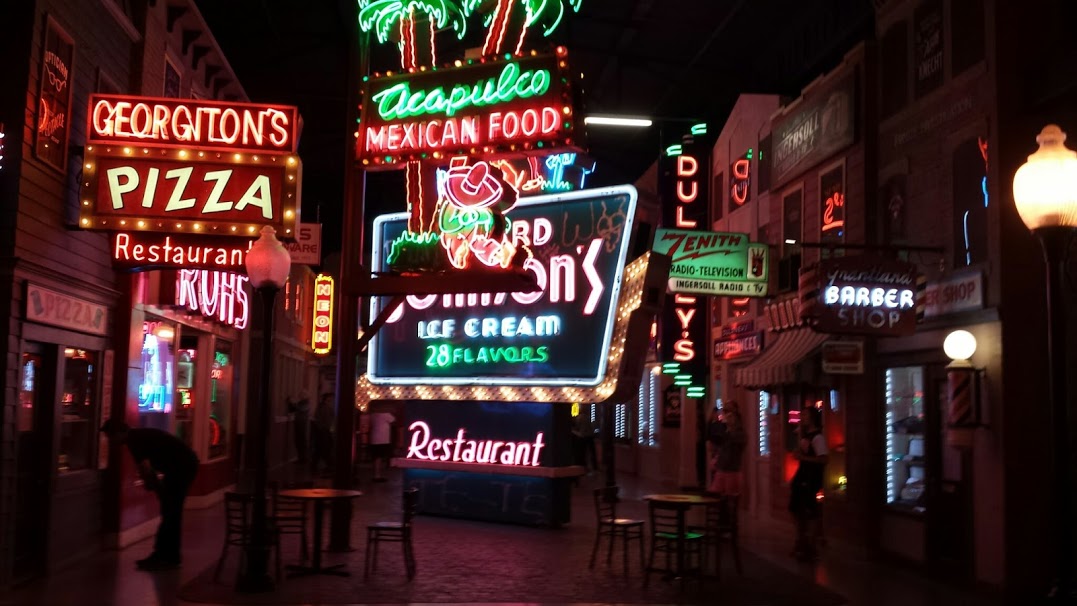

SCA Frequently Asked Questions
What are SCA members interested in?
SCA members are an eclectic group, drawn together by a common interest in roadside architecture. Some of the more common areas of interest include:
- Architecture of all styles including Art Deco, Modern, Googie, Programmatic/Mimetic, Vernacular, etc.
- Highways of all types
- Restaurants including diners, drive-ins, and coffee houses
- Gas stations
- Motels, hotels, tourist cabins, motor courts, etc.
- Retail centers such as Main Streets, strip malls, indoor malls
- Theatres, both enclosed and drive-in
- Neon signs
- Ghost signs
- Amusement parks
What is roadside architecture?
The term roadside architecture applies to buildings and other structures directly and indirectly associated with roads. Obvious examples include restaurants, motels, and gas stations. Other examples include signs, vernacular buildings, shopping and retail centers, and programmatic (or mimetic) structures, as well as theme and amusement parks.
How do I save an important roadside building or structure?
Here is a great starter document published by the SCA, How to Save a Roadside Place.
Where is the archeology in SCA?
The SCA focuses on a field of archeology that is often referred to as above ground archeology (the term was coined by John L. Cotter of the National Park Service and refined by Thomas Schlereth of Notre Dame). Research takes place above ground level and includes the study of buildings and the landscape. But piecing together these above-ground elements, it is possible to interpret the past and its importance to contemporary matters. Schlereth considers the following in his definition of above-ground archeology:
- Geological/Geographical Features
- Landscape Vegetation
- Place and Street Names
- Street Histories
- Vernacular Buildings
- Working Places
- Commercial Archeology
What is commercial archeology?
In the Dictionary of Building Preservation (1996), commercial archaeology is defined as “The study of artifacts, structures, signs, and symbols of the American commercial process; includes both mass-produced and vernacular forms of the machine age: transportation facilities, such as highways and bus stations; roadside development, such as diners, strip retail, and neon signs; business district buildings, such as movie theaters and department stores; and recreation facilities, such as amusement parks.”
How did the SCA begin?
The SCA was organized by a group of scholars and experts who had an interest in commercial archeology. The group met in Vermont, and in 1979 they formally organized.
Business Address and Purpose
At present, the operations of the SCA are managed throughout the country by the members of the board of directors.
Business Address:
Society for Commercial Archeology, Inc.
P.O. Box 2500
Little Rock, AR 72203
Tax-exempt status: 501(c)(3)
Primary purpose: Document, educate, celebrate and preserve the commercial-built environment.
Does the SCA have an archive?
The SCA maintains an archive of its own materials in Austin, Texas.
Who is on the SCA Board of Directors?
The Board of Directors, the organization’s governing body, currently consists of fourteen members. Click here to read biographical information for the current Board of Directors. If you are interested in serving on the Board of Directors, please contact the Nominations Committee.
What is the SCA's mission?
The mission of the SCA is to recognize the unique historical significance of the 20th-century commercial built environment and cultural landscapes of North America, emphasizing the impact of the automobile and the commercial process. To this end, the SCA will carry out projects of documentation, education, advocacy, and conservation to encourage public awareness and understanding of these significant elements of our heritage.
How can I get more involved?
There are many ways you can be more involved with the SCA.
First, consider becoming a member. Membership provides you with publications, invitations to participate at conferences, and the opportunity to meet others who share your interests. If you’re like most SCA members, chances are you have a story to tell, or maybe there is something you’d like to share with the other members of the SCA. If this sounds like you, consider writing an article or making other contributions to the SCA News or the SCA Journal. Members are also encouraged to serve on the Board of Directors or to volunteer for its many projects and events.
How do I join the SCA?
Any person or organization with an interest in commercial archeology is eligible for membership in the SCA. Each member in good standing shall be entitled to one vote on matter submitted to to the general membership. Joining the SCA is very easy. Click here for more information about joining.

